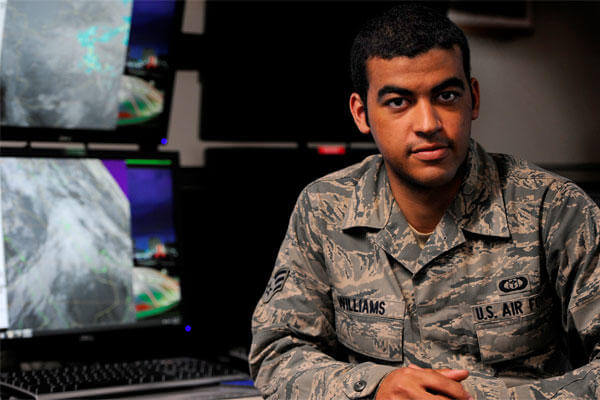SUMTER, S.C. – An Air Force weather forecaster assigned to the 28th Operational Weather Squadron here weathered a storm as it unfolded in front of him in the form of a vehicle accident Jan. 29.
Air Force self-aid and buddy care training paid off for Senior Airman Patrick Williams when he saw a tractor-trailer overturn during his drive to work.
“The truck ended up tipping over, sliding and rolling onto its roof,” Williams said. “The truck's cargo, which was metal piping, spilled out into the road, and the truck came to a stop.”
Williams quickly pulled over to help the truck driver.
“It was a mother of two and myself who were first on the scene,” he said. “She called 911 while I went to check on the truck driver.”
As Williams approached the wreckage, he said, he wasn’t sure what to expect.
“When I got to the driver, I first tried talking to him and did not get a response,” Williams said. “He was buried underneath several of his personal items that had shifted during the accident, so I began pulling these items out of the cabin.”
Williams then began using simple techniques he had learned during self-aid and buddy care training.
“I ensured he was breathing, and noticed he had minor cuts,” he recalled. “The truck was still running, and it began leaking unknown fluids.”
Williams knew he had to get the driver out. By that time, two other people had stopped to lend aid.
“The truck driver began responding to questions I was asking, and when asked if he could move, he was unsure,” Williams said. “At this point, I began asking if he could feel pressure while I grabbed his arms, legs, feet and fingers as I tried to ensure he wasn’t paralyzed in any way.”
As others who stopped helped Williams get the driver out and away from the truck, a county sheriff and other first responders arrived and transported the driver to a hospital.
Those who are first on the scene are crucial to sustaining an injured victim, and can even be a life-saving factor, said Air Force Airman 1st Class Patricia Ibanez, 20th Medical Support Squadron health service management technician. Actions such as calling 911 and rendering aid are some of the most important aspects of helping someone who has been injured, she added.
Air Force 2nd Lt. Mitchell Westlund, who works with Williams, said the airman’s actions show the kind of person he is.
“I am unsurprised by Senior Airman William’s quick thinking, his selflessness and his willingness to do what is necessary, regardless of how difficult it may be,” he said. “Williams is a conscientious and well-balanced airman. His greatest concern was for the driver of the truck and for the time his co-workers had to take up in his absence while he was dealing with the aftermath of the accident.”
Williams credited his response to his self-aid and buddy care training.
“I believe the SABC training and other medical aid training I’ve had since being in the Air Force helped when I was faced with this situation,” he said. “The whole incident happened pretty fast. I didn't really think about what I was doing. It was like muscle memory.”






























